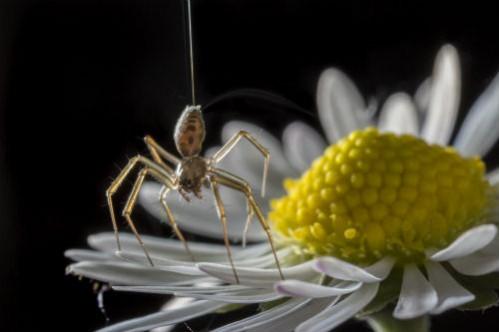
A few weeks ago, news of flying spiders surfaced on the internet, which led to shock, awe and general confusion. How can certain types of spiders, which are thankfully wingless, manage take off in the air?
Videos of some species of spiders showed that they can indeed cover massive distances, sometimes hundreds of kilometres using this method. Scientists at the University of Bristol have finally put the matter to rest.
At first glance, the obvious answer to this conundrum seems to be wind. The spiders seem to catch the wind with their silk that acts like parachutes and carry them off, but in reality, the same behaviour was also seen in cases where there was little to no wind, says a report by the researchers.
Even Charles Darwin himself noted in one of his travels that the aerodynamic properties of a spider body are not really conducive for flight, but even on windless days, they seem to be flying at great speeds. This attribute is known as "ballooning" notes the report.
Lead researcher Erica Morley, an expert in sensory biophysics, explained, "Many spiders balloon using multiple strands of silk that splay out in a fan-like shape, which suggests that there must be a repelling electrostatic force involved."
Another reason that wind alone cannot be a factor, notes Morley, is that on some days, regardless of the wind situation, spiders do not balloon, while on other days, a large number of spiders take to the skies. That means wind alone is not a factor and current theories do not fully explain this behaviour, she said.

The answer is likely to be found in what is called the Atmospheric Potential Gradient (APG). It is an electric circuit always present in the Earth's atmosphere. APG electric fields (e-fields) surrounds all matter, and insects are known to be able to detect their presence.
Bumblebees, notes the paper, can detect e-fields that lie between the flowers and their bodies, while honeybees can actually use their charges to communicate with bees of their own hive.
Spiders were not known to be able to detect, let alone make use of e-fields until now, but their silk is a strong electric insulator.
Researchers studied a number of Linyphiid spiders, notes the report, in lab-controlled e-fields similar to what is found in the atmosphere. By switching the fields on and off, they realised that they could move a spider up and down, proving that it was more than wind that caused the spiders to take flight.
Through this study researchers were able to "... show that This means that electric fields as well as drag could provide the forces needed for spider ballooning dispersal in nature."
The study was first published in the journal Current Biology.

















